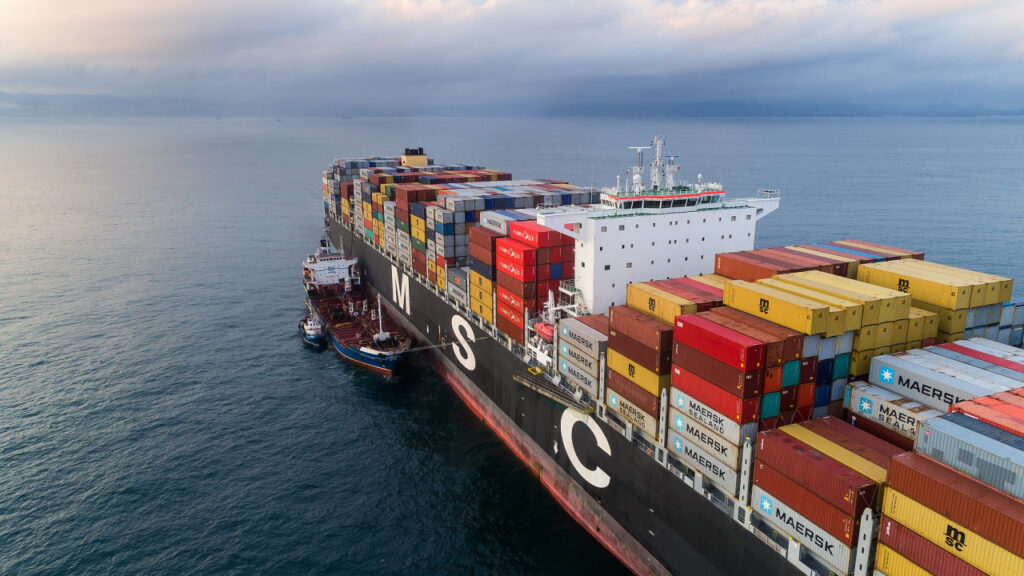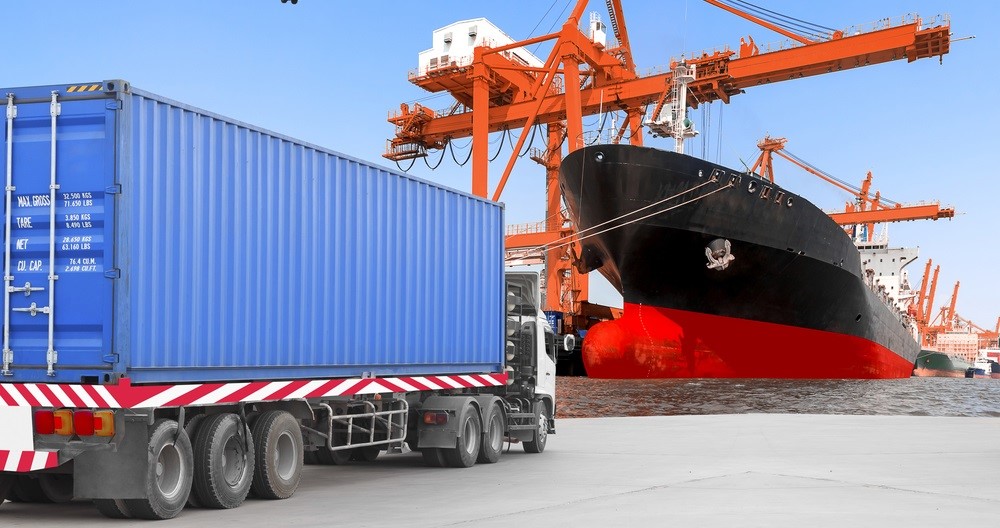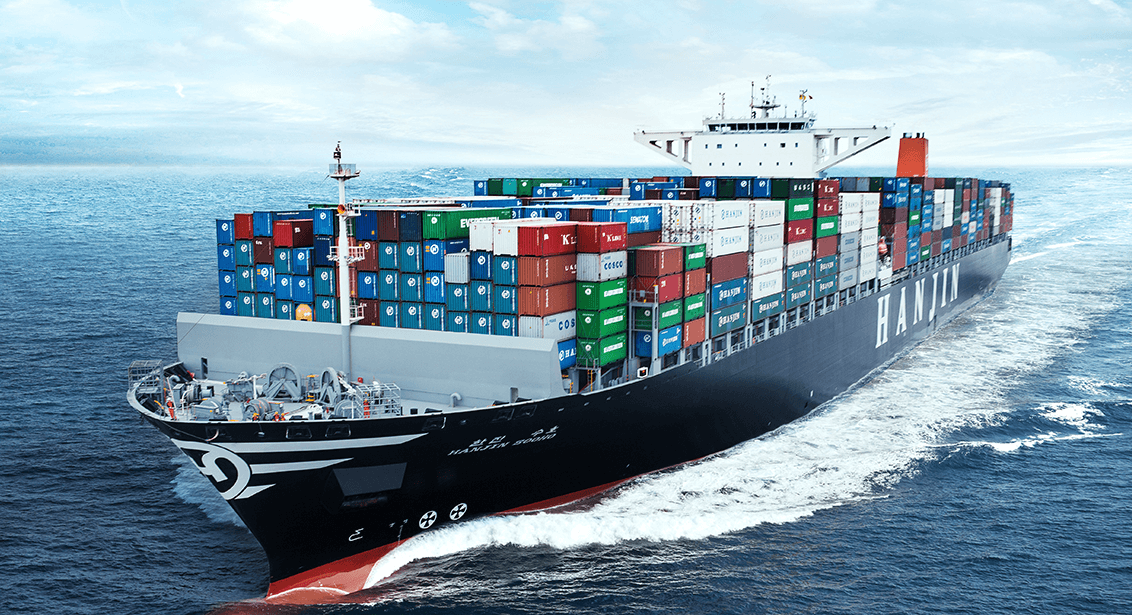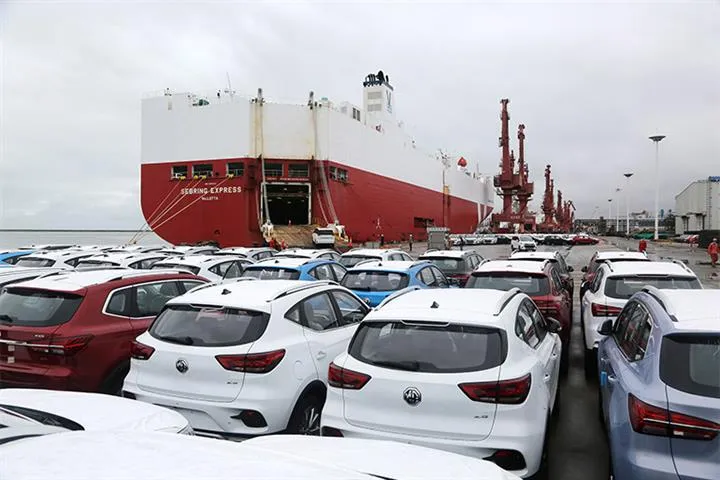Importing goods from China to Mexico can be a complex endeavor, particularly when it comes to choosing the right shipping method. With various options available—ranging from air freight to sea freight—understanding the intricacies of each approach is crucial for optimizing costs and ensuring timely delivery. This guide aims to provide a detailed overview of the shipping methods used for international logistics, highlighting key factors that influence shipping costs and offering practical tips for reducing expenses. By making informed decisions, importers can navigate the logistics landscape more effectively, ultimately enhancing their supply chain efficiency.
Related Article : Shipping From China TO Mexico

Understanding Shipping Options from China to Mexico
Overview of Shipping Methods Available

Shipping goods internationally involves several methods, each with its distinct advantages and disadvantages. The primary shipping options available for transporting goods from China to Mexico include:
- Air Freight:
- Speed: The fastest shipping method, suitable for time-sensitive goods.
- Cost: Generally more expensive than other methods due to speed and capacity limitations.
- Ideal for: High-value or perishable items where quick delivery is essential.
- Sea Freight:
- Cost Efficiency: More cost-effective for larger shipments.
- Capacity: Able to carry large volumes of goods, making it ideal for bulk shipping.
- Delivery Time: Slower than air freight, which might not be suitable for urgent deliveries.
- Express Services:
- Premium Options: Offered by logistics companies that combine air freight and courier services for faster delivery.
- Cost: Higher than standard air freight due to premium service.
Understanding these options is critical for importers to determine the best method suited to their needs.
Comparison of Air Freight and Sea Freight
Here’s a comparison table to illustrate the differences between air freight and sea freight:
| Feature | Air Freight | Sea Freight |
|---|---|---|
| Speed | 1-5 days (depending on destination) | 15-30 days (depending on destination) |
| Cost | Higher costs per kg | Lower costs per kg |
| Capacity | Limited (typically smaller consignments) | Large volumes, ideal for bulk shipments |
| Ideal For | Urgent, high-value, or perishable goods | Non-urgent, bulky, or low-value goods |
| Environmental Impact | Higher carbon footprint per kg | Generally lower carbon footprint |
| Risk of Damage | Generally lower due to quicker transit | Higher risk if not properly packed |
When selecting between air and sea freight, consider your specific goods, urgency, and budget constraints. Each method has its merits, and the right choice will depend on your unique shipment requirements.
READ MORE:
- Shipping From China to the United States
- Shipping From China TO Canada
- Shipping From China TO Mexico
- Shipping From China to Panama
- Shipping From China to Costa Rica
- Shipping From China to Brazil
- Shipping From China TO Colombia
- Shipping From China to Jamaica
- Shipping From China to Venezuela
Key Factors Influencing Shipping Costs
Several key factors influence the overall shipping costs when importing goods from China to Mexico. Understanding these elements can help businesses budget effectively and make informed decisions.
Weight and Dimensions of Your Shipment
The weight and dimensions of your shipment are critical factors in determining shipping costs. Most freight forwarders, including Dantful International Logistics, utilize a dimensional weight pricing system. This means that both the actual weight and the volume of the shipment are considered.
Dimensional Weight Calculation
The formula for calculating dimensional weight is:

Larger, lighter shipments might incur higher costs due to their volume.
Distance and Delivery Time Considerations
The distance between the origin and destination plays a significant role in shipping costs. Shorter distances generally incur lower transportation fees. However, the mode of transport also affects the cost, as air freight is significantly more expensive than sea freight, even over short distances.
Additionally, delivery time is crucial; expedited services will typically cost more than standard options. The choice between air and sea freight is often influenced by an importer’s urgency for delivery.
Customs Duties and Taxes in Mexico
Understanding the customs duties and taxes applicable in Mexico is essential for accurate budgeting. Import duties can vary significantly based on the type of goods being imported and their declared value.
Key Considerations
- Harmonized System (HS) Code: Each product has a specific HS code that determines the applicable tariff.
- Value-Added Tax (VAT): Importers must account for VAT, which is typically around 16% in Mexico.
- Customs Clearance Fees: Additional costs may arise from customs clearance processes, which can be mitigated by utilizing a knowledgeable freight forwarder like Dantful.
| Factor | Description |
|---|---|
| Duties | Based on HS Code; varies by product type |
| VAT | Approximately 16% of the shipment’s total value |
| Customs Clearance Fees | Charges incurred for processing the shipment through customs |
Understanding these elements will provide importers with a clearer picture of total shipping costs and assist in avoiding unexpected expenses.
For a seamless shipping experience, consider Dantful International Logistics. With a reputation for providing a highly professional, cost-effective, and high-quality, one-stop international logistics service, they can assist you with every aspect of shipping from China to Mexico, including customs clearance, insurance services, and tailored logistics solutions. Reach out today to explore how Dantful can enhance your import journey.
How to Research Shipping Companies Effectively
Selecting the right shipping company is a crucial aspect of the import process. An informed choice can lead to more efficient logistics and cost savings. This section provides guidance on how to research shipping companies effectively, including leveraging online marketplaces and the importance of customer feedback.
Utilizing Online Freight Marketplaces
Online freight marketplaces have revolutionized the logistics industry by offering a platform for comparing various shipping companies and their services. These marketplaces allow importers to gather essential information about potential logistics partners quickly and conveniently.
Key Features of Online Freight Marketplaces:
- Comprehensive Listings: Most marketplaces provide an extensive database of shipping companies, encompassing international and regional players, which enables importers to explore various options.
- Instant Quotes: Users can input shipment details to receive instantaneous quotes from multiple carriers, making it easier to compare prices quickly.
- Service Comparisons: Detailed breakdowns of services offered—such as air freight, sea freight, and door-to-door shipping—allow importers to identify the best options tailored to their needs.
- Transparency: Online marketplaces often display additional service features, such as insurance services and customs clearance, enhancing transparency in service offerings.
Some popular online freight marketplaces include Freightos, uShip, and ShipBob. Utilizing these platforms can significantly streamline the process of finding a reliable shipping company.
Reading Customer Reviews and Testimonials
Another critical aspect of researching shipping companies is evaluating customer reviews and testimonials. Insights from previous customers can provide valuable information about a company’s performance, service quality, and reliability.
Strategies for Gathering Reviews:
-
Third-Party Review Sites: Platforms such as Trustpilot, Google Reviews, and Yelp offer a wealth of customer feedback that can help gauge the overall satisfaction with a shipping company.
-
Social Media: Social media channels provide an additional layer of insight. Companies often share customer experiences, while customers can post their reviews, allowing prospective clients to gauge overall sentiment.
-
Industry Forums: Participating in industry-specific forums such as Logistics Management and FreightWaves can yield firsthand accounts and recommendations from other importers.
Evaluating customer feedback helps in identifying potential strengths and weaknesses of a shipping company. It is essential to consider both positive and negative reviews to gain a balanced view of the company’s capabilities.
Comparing Shipping Companies
Once you have gathered information about various shipping companies, it is important to compare them based on key criteria to determine the best fit for your specific shipping needs.

Criteria for Comparison
1. Cost
The overall cost of shipping varies greatly between companies. Consider not only the base freight charges but also any additional fees, including customs clearance, insurance, and handling charges. Be sure to get detailed quotes that outline each component of the total cost.
2. Reliability and Reputation
Assessing reliability is vital. Look for companies with strong reputations for on-time deliveries and minimal damage rates. Recognized certifications such as ISO 9001 can also be indicators of a company’s commitment to quality.
3. Transit Time
Compare the estimated transit times for each shipping method. While air freight may be faster, sea freight is often more economical for larger shipments. Consider your shipping deadlines to identify which options align with your timelines.
4. Customer Service
Excellent customer service is essential for a smooth shipping experience. Evaluate the responsiveness and helpfulness of a company’s support team. Companies that offer dedicated account managers often provide a more personalized service experience.
Top Shipping Companies
When evaluating shipping providers, it’s important to consider the key metrics associated with leading logistics companies. Here is an overview of notable shipping firms along with a comparative table:
Overview of Leading Shipping Companies
- DHL: Known for its extensive global network and fast delivery times, particularly for international shipments.
- Dantful International Logistics: Offers a highly professional, cost-effective, and high-quality, one-stop international logistics service. Known for strong customer support and tailored logistics solutions.
- FedEx: Renowned for its express services, particularly in the U.S. market, with a focus on speed and reliability.
- UPS: Offers a broad range of logistics solutions, including ground and air shipping, with a strong reputation for reliability within North America and internationally.
Comparative Table with Key Metrics
| Company | Cost (Average Shipping Rate) | Reliability | Transit Time (Air) | Transit Time (Sea) | Customer Service Rating |
|---|---|---|---|---|---|
| DHL | $$ | High | 1-3 days | 10-20 days | 4.5/5 |
| Dantful | $ | High | 2-5 days | 15-30 days | 4.7/5 |
| FedEx | $$$ | Very High | 1-3 days | N/A | 4.4/5 |
| UPS | $$ | High | 1-5 days | 10-25 days | 4.3/5 |
Key Metrics Explained:
- Cost (Average Shipping Rate): Indicates the general pricing tier of each company.
- Reliability: Based on customer reviews and performance history.
- Transit Time: Ranges for different shipping methods; air is typically faster than sea.
- Customer Service Rating: Aggregated score from customer reviews reflecting service quality.
By carefully considering these criteria and evaluating the top shipping companies, importers can make informed decisions that align with their unique logistics needs. As you embark on your shipping journey, choosing a reputable partner like Dantful International Logistics can enhance your overall experience, ensuring your goods are delivered efficiently and safely.
Dantful International Logistics Services:
- Dantful Ocean Freight Services
- Air Freight From China
- Amazon FBA Freight Forwarding
- WAREHOUSE Services
- One-Stop Customs Clearance Solution
- Cargo Insurance Services in China
- DDP Shipping Services By Dantful Logistics
- Out of Gauge Cargo Transportation Shipping Services
Tips for Reducing Shipping Costs
Reducing shipping costs is an essential consideration for businesses involved in importing goods, especially from a vast marketplace like China to Mexico. Effective strategies can lead to significant savings over time. Below are key tips that can help you minimize shipping expenses.
Bulk Shipping
Opting for bulk shipping can lead to substantial cost savings. When importing larger quantities of goods, shipping costs per unit generally decrease. Here’s why bulk shipping is advantageous:
-
Economies of Scale: Larger shipments enable importers to take advantage of reduced shipping rates offered by freight carriers. Providers typically offer lower rates for bulk shipments due to the efficiencies gained in transporting larger volumes.
-
Lower Handling Fees: Shipping fewer, larger containers can reduce handling costs. Each shipment incurs fees for loading, unloading, and customs processing, so consolidating shipments can lead to savings.
-
Shipping Options: Bulk shipments are often more suitable for sea freight, which is more cost-effective than air freight for large volumes. Importers can leverage this method to save on transportation costs.
Consider working with a freight forwarder like Dantful International Logistics to help consolidate shipments and optimize shipping strategies.
Flexible Shipping Dates
Being flexible with your shipping dates can significantly lower costs. Here are some strategies to consider:
-
Avoid Peak Seasons: Shipping rates can skyrocket during peak seasons, such as holidays or major shopping events. By planning shipments during off-peak times, importers can benefit from reduced rates.
-
Utilize Economy Services: When time-sensitive delivery is not a priority, utilizing economy shipping options can yield substantial savings. These services may take longer but are often much less expensive.
-
Advance Planning: By scheduling shipments in advance, importers can avoid last-minute rush fees and ensure they can take advantage of the most economical transportation methods.
-
Freight Forwarder Assistance: Engaging a freight forwarder can provide insights into optimal shipping windows and help manage logistics efficiently.
Negotiating with Shipping Companies
Negotiating with shipping companies can lead to better rates and terms. Here are some tips for effective negotiation:
-
Research Market Rates: Before entering negotiations, research the prevailing market rates for shipping services. Understanding the average costs allows you to negotiate more effectively.
-
Leverage Volume: If you regularly ship large quantities, use this as leverage in negotiations. Highlighting your shipping frequency can encourage carriers to offer better rates for loyalty.
-
Request Multiple Quotes: Obtain quotes from various carriers and use this information in your negotiations. Companies are often willing to match or undercut competitors’ pricing to secure your business.
-
Discuss Additional Services: In addition to shipping rates, negotiate other terms, such as payment timelines, insurance rates, and the inclusion of value-added services like customs clearance or warehouse services.
-
Build Relationships: Establishing strong relationships with shipping representatives can lead to more favorable terms over time. Frequent communication and consistent engagement can build trust, making negotiations smoother.
Fostering a strong partnership with your shipping provider, like Dantful Logistics, can facilitate ongoing negotiations and benefit your business in the long run.
FAQs
1. What are the main shipping options for importing goods from China to Mexico?
The primary shipping options include air freight, sea freight, rail freight, and express services. Air freight is the fastest but more expensive, while sea freight is cost-effective for larger shipments but takes longer.
2. How do I choose between air freight and sea freight?
The choice between air and sea freight depends on factors such as urgency, budget, and shipment volume. Air freight is ideal for high-value or perishable items that need quick delivery, while sea freight is more suitable for bulk shipments where cost savings are a priority.
3. What factors influence shipping costs?
Shipping costs are influenced by several factors, including the weight and dimensions of the shipment, the distance between origin and destination, delivery time, and customs duties and taxes applicable in Mexico.
4. How are shipping costs calculated?
Shipping costs are typically calculated based on the actual weight and the dimensional weight of the shipment. Freight forwarders use dimensional weight pricing, meaning both the volume and weight are considered in the pricing. The formula for calculating dimensional weight is:

5. Are there any customs duties or taxes I should be aware of?
Yes, customs duties vary based on the Harmonized System (HS) Code of the imported goods, and there is typically a Value-Added Tax (VAT) of around 16% in Mexico. Importers should also expect additional customs clearance fees.
6. How can I reduce shipping costs?
To reduce shipping costs, consider options such as bulk shipping, being flexible with shipping dates, and negotiating with shipping companies for better rates. Engaging a freight forwarder can also help optimize shipping strategies.
7. What should I look for in a shipping company?
When selecting a shipping company, consider factors like cost, reliability, transit time, and customer service. Reading customer reviews and comparing quotes from multiple carriers can also aid in making an informed decision.

Young Chiu is a seasoned logistics expert with over 15 years of experience in international freight forwarding and supply chain management. As CEO of Dantful International Logistics, Young is dedicated to providing valuable insights and practical advice to businesses navigating the complexities of global shipping.
The other language versions of this article
- نصائح للعثور على أرخص شركة شحن من الصين إلى المكسيك
- Tips om het goedkoopste verzendbedrijf van China naar Mexico te vinden
- Conseils pour trouver la compagnie de transport la moins chère de la Chine vers le Mexique
- Tipps zur Suche nach dem günstigsten Versandunternehmen von China nach Mexiko
- Suggerimenti per trovare la compagnia di spedizione più economica dalla Cina al Messico
- Consejos para encontrar la empresa de envío más barata de China a México
- Dicas para encontrar a empresa de transporte mais barata da China para o México
- Советы по поиску самой дешевой компании по доставке из Китая в Мексику
- Çin’den Meksika’ya En Ucuz Nakliye Şirketini Bulmak İçin İpuçları





















 Afrikaans
Afrikaans Shqip
Shqip አማርኛ
አማርኛ العربية
العربية Հայերեն
Հայերեն Azərbaycan dili
Azərbaycan dili Euskara
Euskara Беларуская мова
Беларуская мова বাংলা
বাংলা Bosanski
Bosanski Български
Български Català
Català Cebuano
Cebuano Chichewa
Chichewa 简体中文
简体中文 繁體中文
繁體中文 Corsu
Corsu Hrvatski
Hrvatski Čeština
Čeština Dansk
Dansk Nederlands
Nederlands English
English Esperanto
Esperanto Eesti
Eesti Filipino
Filipino Suomi
Suomi Français
Français Galego
Galego ქართული
ქართული Deutsch
Deutsch Ελληνικά
Ελληνικά Kreyol ayisyen
Kreyol ayisyen Harshen Hausa
Harshen Hausa Ōlelo Hawaiʻi
Ōlelo Hawaiʻi עִבְרִית
עִבְרִית हिन्दी
हिन्दी Hmong
Hmong Magyar
Magyar Íslenska
Íslenska Igbo
Igbo Bahasa Indonesia
Bahasa Indonesia Gaeilge
Gaeilge Italiano
Italiano 日本語
日本語 Basa Jawa
Basa Jawa ಕನ್ನಡ
ಕನ್ನಡ Қазақ тілі
Қазақ тілі ភាសាខ្មែរ
ភាសាខ្មែរ 한국어
한국어 كوردی
كوردی Кыргызча
Кыргызча ພາສາລາວ
ພາສາລາວ Latin
Latin Latviešu valoda
Latviešu valoda Lietuvių kalba
Lietuvių kalba Lëtzebuergesch
Lëtzebuergesch Македонски јазик
Македонски јазик Malagasy
Malagasy Bahasa Melayu
Bahasa Melayu മലയാളം
മലയാളം Maltese
Maltese Te Reo Māori
Te Reo Māori मराठी
मराठी Монгол
Монгол ဗမာစာ
ဗမာစာ नेपाली
नेपाली Norsk bokmål
Norsk bokmål پښتو
پښتو فارسی
فارسی Polski
Polski Português
Português ਪੰਜਾਬੀ
ਪੰਜਾਬੀ Română
Română Русский
Русский Samoan
Samoan Gàidhlig
Gàidhlig Српски језик
Српски језик Sesotho
Sesotho Shona
Shona سنڌي
سنڌي සිංහල
සිංහල Slovenčina
Slovenčina Slovenščina
Slovenščina Afsoomaali
Afsoomaali Español
Español Basa Sunda
Basa Sunda Kiswahili
Kiswahili Svenska
Svenska Тоҷикӣ
Тоҷикӣ தமிழ்
தமிழ் తెలుగు
తెలుగు ไทย
ไทย Türkçe
Türkçe Українська
Українська اردو
اردو O‘zbekcha
O‘zbekcha Tiếng Việt
Tiếng Việt Cymraeg
Cymraeg יידיש
יידיש Yorùbá
Yorùbá Zulu
Zulu